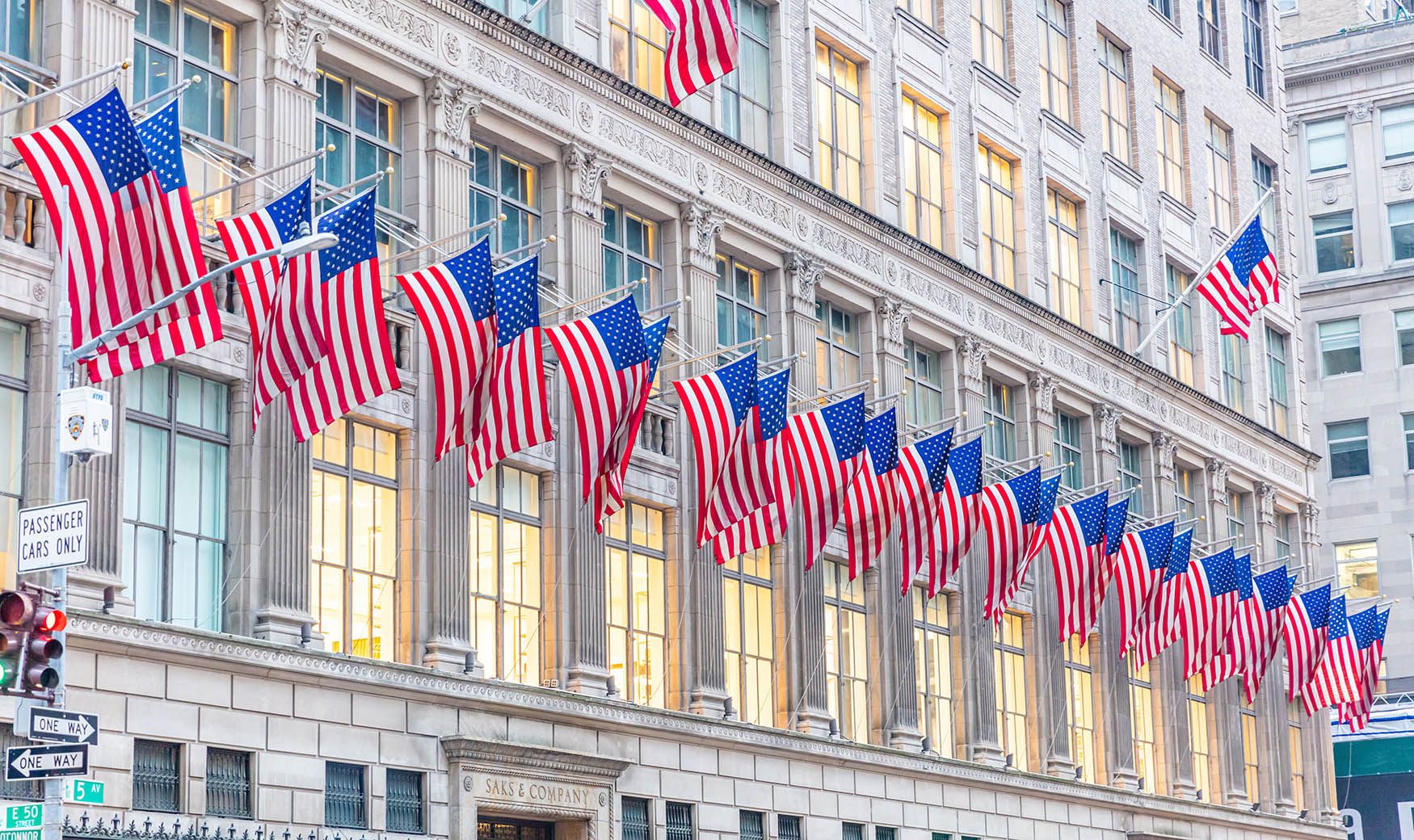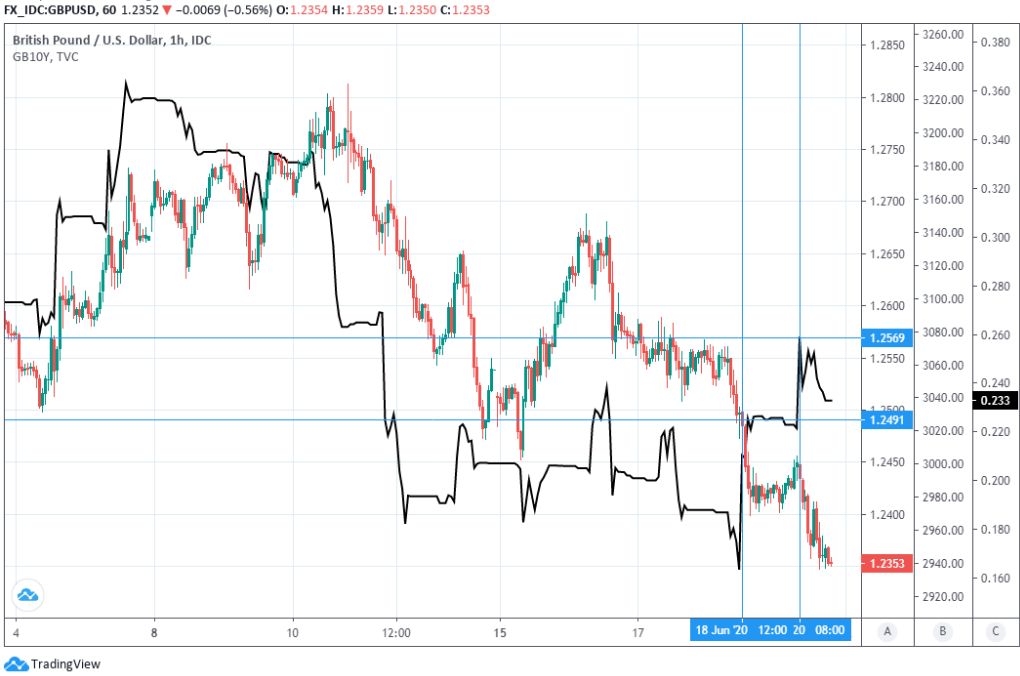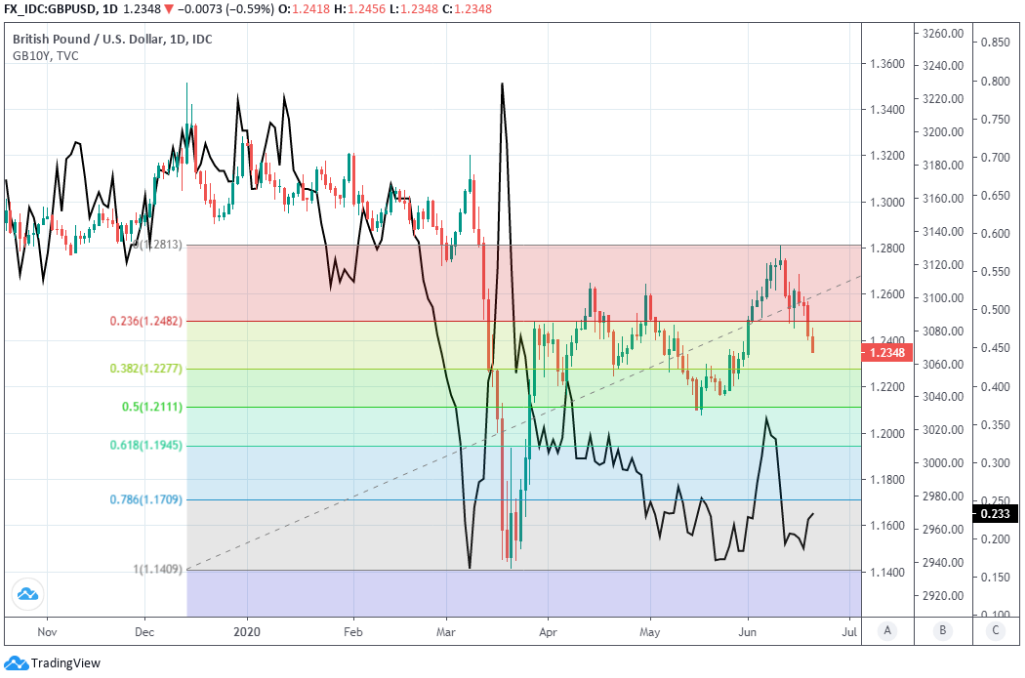Pound-Dollar Rate Burns after BoE Adjourns and Market Mood Turns
- Written by: James Skinner
-

Image © Adobe Images
Achieve up to 3-5% more currency for your money transfers. Beat your bank's rate by using a specialist FX provider: find out how.
The Pound-to-Dollar rate doubled over into the weekend Friday as a turn lower in stock markets exacerbated earlier losses that were already snowballing amid rebellion over the latest Bank of England (BoE) monetary policy decision.
Pound Sterling's woes built Friday as stock markets crumbled in response to more evidence of a coronavirus second wave, with the World Health Organization notifying of 150k new infections, the highest daily count so far.
The announcement was made in the WHO's daily briefing and came at the tailend of a week that's been dominated by concerns among investors about the prospect of the global economic recovery being disrupted by another 'lockdown.'
This was after China closed schools, cancelled flights and placed parts of the capital Beijing back into lockdown this week in response to a new outbreak, which has emerged just as investors were contemplating the potential implications of growing second waves in a number of U.S. states.
Fears of a second wave have competed with policy announcements and economic data for attention in a market that has increasingly looked past the health threat and human cost of the disease in favour of positioning for a global economic recovery. Bloodshed in equity markets, which have all but wiped coronavirus-related losses off the charts, added insult to injury for a Pound Sterling already wounded in the Thursday session by a Bank of England that may or may not have played a fine sleight of hand.
"While we remain broadly neutral on the outlook for the dollar we are watching the COVID data more closely again. Policy slippage as economies rebound from the easing of lockdowns is another risk for the markets in the coming weeks. The BoE may be an early sign of that risk with a cautious policy response while EM risks are also higher given the COVID spread is now very much more an EM story than a DM one," says Derek Halpenny, head of research, global markets EMEA and international securities at MUFG.
Above: Pound-to-Dollar rate alongside S&P 500 (orange) at 15 minute intervals.
The BoE announced a £100bn increase in its bond buying programme that delivered economist expectations to the letter and well enough to prompt a short-lived spike in Sterling, which might best be explained by short-covering.
But it also left investors feeling short-changed and enough so for many of them to shy away from the Pound soon after.
"Clearly, markets fear the reduced buyback activity will require more concessions, particularly at the longer end of the (historically expensive) Gilt curve to attract sufficient private sector demand. Given the scale of the initial shock to the economy (which is still set to be very large even if not as big as some of the more pessimistic assessments) and the risks around the recovery, we don’t think the MPC is finished in terms of stimulus," says Cathal Kennedy, a European economist at RBC Capital Markets.
Investors have sold Sterling and bonds since the spike that followed the BoE's decision, which was perceived as an indication the markets will be expected to soak up a government borrowing requirement that's seen increasing by £270bn this year as well as a lessening of support for an economy that's still one-half under 'lockdown' and mired in a historic recession.
RBC Capital Markets says the BoE would necessitate a higher yield offering to investors if it was to allow coronavirus-related bond issuance to swamp the market, which would mean lower prices for all other bonds already on the market. New domestic investors are offered higher yields when bond prices fall while foreign investors get an incrementally higher offering if the domestic currency also falls.
Both the currency and bond market have fallen since Thursday but it's not clear if they've gone far enough to placate any investor concerns about yields, while lower prices do nothing to address perceptions that the Monetary Policy Committee (MPC) is beginning to consider its job as done.
Above: Pound-to-Dollar rate alongside British Government 10-year bond yield (black line) at 15 minute intervals.
The MPC said the economy has likely avoided the worst case scenario outcome and BoE chief economist Andy Haldane even voted against the £100bn increase to the quantitative easing programme.
"We are still very much in the high uncertainty stage of not having much clarity on the full and eventual scale of recovery and hence the markets rightly have reacted badly to the explicit guidance that indicates perhaps a sooner than anticipated slowing in Gilt purchases. The FTSE 100 and FTSE 250 are two of the worst performing of the major equity markets and certain mobility data is indicating a slower return to normality unfolding in the UK – understandable given the worse COVID situation," Halpenny says.
The UK is lagging its major counterparts in reopening the economy, according to various studies of activity including the latest Goldman Sachs Effective Lockdown Index, which assigns a score of between 1 and 100 to each country with those at the lower end representing economies which are less encumbered by restrictions and vice versa. The UK had a score of 50 on June 16 when all other major economies had scores of 40 or below.
This kind of lingering disruption could explain why some investors have voted with their wallets and many analysts have criticised the decision to slow the pace of bond buying, given uncertainty over how swift any recovery will be and whether it'll be disrupted by a second wave of coronavirus.
Nobody even yet knows how great the damage is, given 'lockdown' was not imposed until very late in the first quarter and May month GDP data will not be out until July, which some see as a saving grace for the BoE.
"There is currently little justification for the MPC to remain in emergency fire-firefighting mode. Liquidity conditions have steadied; the economy looks to be past its low point; and high-frequency indicators suggest that the depth of the recession is likely to be less severe than policymakers feared," says Konstantinos Venetis, a senior economist at TS Lombard, an independent investment research provider. "The Committee is, in effect, rolling its “put” until Chancellor Sunak announces his fiscal plan for 2021, including a new swathe of stimulus measures. Adopting a wait-and-see stance makes sense from a practical standpoint, too, as this autumn will be pivotal in terms of the virus cycle (“second wave” risk) and Brexit negotiations."
Above: Pound-to-Dollar rate alongside British Government 10-year bond yield (black line) at daily intervals with Fibonacci support levels of March-to-April recovery trend.













